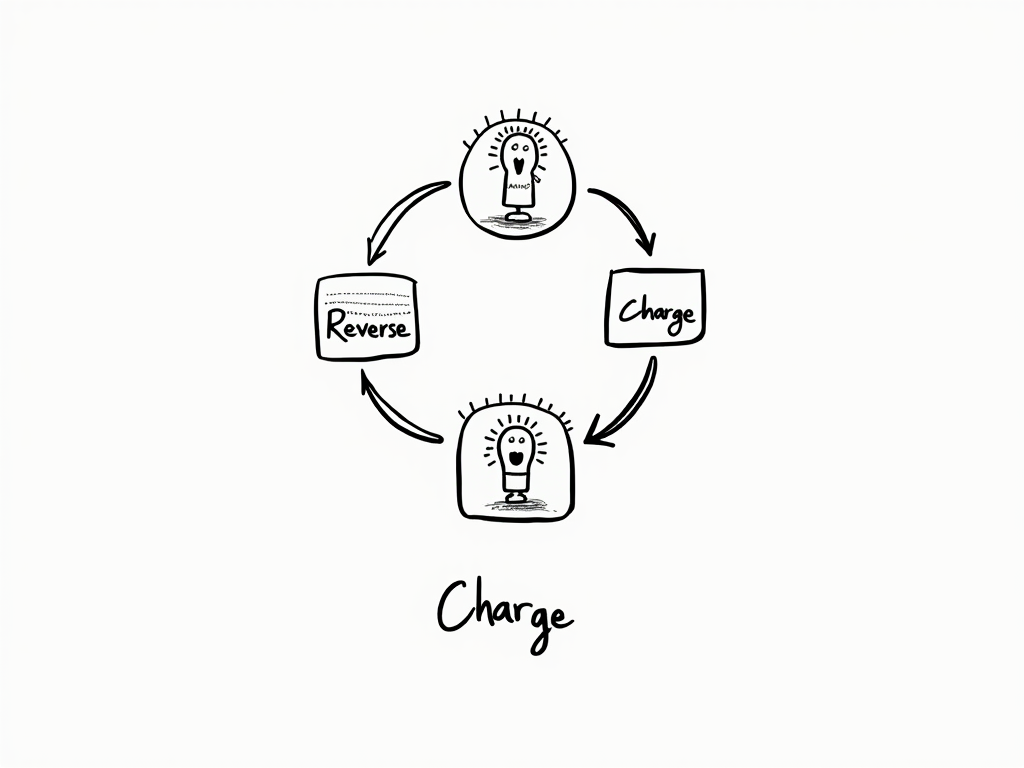
Estonia Self-Employed Taxes: A Complete Guide to Rates and Social Contributions
Reading time: 12 minutes
Table of Contents
- Introduction to Self-Employment in Estonia
- Estonian Self-Employment Tax Structures
- Income Tax for Self-Employed Individuals
- Social Tax Obligations
- Pension Contributions
- Available Tax Deductions and Allowances
- Registration and Compliance Requirements
- Tax Optimization Strategies
- Real-World Case Studies
- Conclusion
- FAQs
Introduction to Self-Employment in Estonia
Estonia’s digital landscape has transformed it into one of Europe’s most attractive destinations for entrepreneurs and freelancers. But with opportunity comes responsibility—specifically, understanding the unique tax framework that governs self-employment in this Baltic tech hub.
Self-employment in Estonia isn’t just about freedom and flexibility; it’s about navigating a tax system that, while straightforward compared to many European counterparts, has its own distinct characteristics that can significantly impact your bottom line.
Whether you’re an Estonian resident considering the leap into self-employment, a digital nomad eyeing Estonia’s e-Residency program, or an established entrepreneur seeking clarity on your obligations, this guide cuts through the complexity to deliver practical insights into Estonia’s self-employment tax landscape.
“Estonia’s tax system is designed with simplicity and digital efficiency in mind, but self-employed individuals still face specific compliance requirements that require careful attention.” — Kairi Luberg, Estonian Tax Consultant
Estonian Self-Employment Tax Structures
In Estonia, self-employed individuals can operate under several different legal structures, each with distinct tax implications. Let’s examine your options:
Sole Proprietor (FIE – Füüsilisest isikust ettevõtja)
As an FIE, you’re not creating a separate legal entity. You’re personally liable for all business obligations, but you benefit from relatively straightforward tax administration. This structure is particularly common among freelancers, consultants, and small service providers.
FIEs face a graduated income tax structure, social tax obligations, and potential VAT registration requirements (if your turnover exceeds €40,000 annually). One distinct advantage is the ability to deduct business-related expenses directly from your income before tax calculations.
Private Limited Company (OÜ – Osaühing)
Many self-employed individuals in Estonia opt to establish an OÜ, which creates a separate legal entity. The key tax difference here is that Estonia employs a unique corporate tax system that only taxes distributed profits—not retained earnings. This means you can reinvest your business profits without immediate taxation.
However, when you extract money from your OÜ (through dividends, salary, or benefits), various tax obligations are triggered. This structure offers liability protection but comes with more administrative requirements.
Self-Employed Professional
Certain professions (notaries, bailiffs, sworn translators) operate under specific regulations with tailored tax treatment. These specialized arrangements typically involve a combination of income tax and social contributions governed by profession-specific rules.
Your choice of structure fundamentally shapes your tax obligations, available deductions, and compliance requirements. Let’s examine the specific rates and contributions that apply in each scenario.
Income Tax for Self-Employed Individuals
Estonia applies a flat income tax rate of 20% to most income, which is relatively straightforward compared to the progressive tax systems found in many European countries. However, the application of this rate varies depending on your chosen business structure.
Income Tax for FIEs
As a sole proprietor (FIE), you’ll pay 20% income tax on your business profits after allowable deductions. The tax base is calculated by subtracting your business expenses from your business income.
Estonia offers a basic tax-free allowance of €654 per month (€7,848 annually) as of 2023, though this decreases gradually for higher earners. Once your annual income exceeds €25,200, the tax-free amount begins to decrease, eventually reaching zero for incomes above €28,800.
FIEs typically make advance income tax payments four times per year (by the 15th of March, June, September, and December). These payments are based on either:
- 1/4 of the income tax calculated on business income from two years ago, or
- The taxpayer’s own estimation of the expected tax liability
The final reconciliation occurs during the annual tax declaration period (typically January through April of the following year).
Income Tax for OÜ Owners
If you operate through an OÜ, the income tax picture becomes more nuanced:
- Salary payments: If you pay yourself a salary, it’s subject to 20% income tax (plus social tax and unemployment insurance contributions paid by the company)
- Dividend distributions: When your OÜ distributes profits as dividends, they’re taxed at 20% (or at a reduced rate of 14% for regular dividend payments)
The strategic advantage of the OÜ structure becomes apparent when you consider that retained earnings—profits kept within the company for reinvestment—aren’t subject to immediate taxation. This creates significant tax deferral opportunities not available to FIEs.
Social Tax Obligations
Social tax represents one of the most significant tax obligations for self-employed individuals in Estonia. Currently set at 33%, this tax funds the healthcare and pension systems.
Social Tax for FIEs
If you operate as an FIE, you’re required to pay social tax on your business income after deductions. However, there are important minimum and maximum thresholds to consider:
- Minimum obligation: Even if your business activity generates minimal or no profit, you’re generally required to pay minimum social tax based on the minimum monthly wage (€820 in 2023). This means a minimum monthly social tax payment of approximately €270.60 (€820 × 33%)
- Maximum threshold: Social tax contributions are capped at an annual income of €85,200 (as of 2023)
There are certain exemptions from the minimum social tax requirement, including periods when you:
- Receive state pension
- Have been declared as having no capacity for work
- Receive maternity benefits
- Are a full-time student
Social tax payments for FIEs are made quarterly, with advance payments due on the same schedule as income tax advance payments.
Social Tax for OÜ Owners
If you operate through an OÜ and pay yourself a salary, the company is responsible for paying the 33% social tax on your gross salary. Unlike with the FIE structure, there’s no social tax obligation on dividend payments—only on salary payments.
This creates an important strategic consideration: while taking more compensation as dividends reduces social tax obligations, it also reduces your social security coverage, potentially affecting your healthcare entitlements and future pension.
Pension Contributions
Estonia operates a three-pillar pension system, and your obligations as a self-employed individual vary based on your age, participation choices, and business structure.
Mandatory Pension Contributions
The second pillar of Estonia’s pension system is mandatory for individuals born after 1983, though participation rules changed in 2021 to make this pillar voluntary. If you participate in the second pillar:
- As an FIE, you’ll contribute 2% of your business income after deductions
- If operating through an OÜ and taking a salary, the 2% is withheld from your gross salary
Additionally, the state redirects 4% of the social tax paid on your behalf to your second pillar pension account if you’re a participant.
Voluntary Pension Contributions
The third pillar is entirely voluntary but offers tax incentives. Contributions to third pillar pension funds are deductible from your taxable income up to 15% of your annual income (capped at €6,000).
This represents a valuable tax optimization tool for self-employed individuals in both FIE and OÜ structures, as it provides immediate tax relief while building retirement savings.
Available Tax Deductions and Allowances
One of the critical aspects of tax efficiency for self-employed individuals is maximizing legitimate deductions. Estonia offers several important deductions and allowances that can significantly reduce your tax burden.
Business Expense Deductions for FIEs
As an FIE, you can deduct business-related expenses that are:
- Directly related to your business activities
- Properly documented with invoices and receipts
- Reasonable and necessary for business operations
Common deductible expenses include:
- Office rent and utilities
- Business equipment and supplies
- Professional services (accounting, legal, etc.)
- Business travel expenses
- Advertising and marketing costs
- Professional development courses
- Vehicle expenses (if used for business)
For home office deductions, you can typically deduct a proportionate amount of your housing costs based on the percentage of space used exclusively for business.
Special Deductions and Provisions
Estonia offers several special deductions that apply to self-employed individuals:
- Social tax deduction: FIEs can deduct the social tax and unemployment insurance contributions they pay
- Business start-up costs: These can be deducted over a period of up to five years
- Loss carryforward: Business losses can be carried forward for up to seven years
- Simplified business expense recording: Small businesses with annual income under €15,000 can opt for simplified accounting methods
Comparative Table: Tax Deductions by Business Structure
| Deduction Type | Sole Proprietor (FIE) | Private Limited Company (OÜ) | Maximum Benefit |
|---|---|---|---|
| Business Expenses | Directly deductible from business income | Deductible from company income | Unlimited (if legitimate) |
| Home Office | Proportional deduction allowed | Rental payment from company to owner required | Varies by property costs |
| Pension Contributions | Up to 15% of income (€6,000 cap) | Up to 15% of income (€6,000 cap) | €1,200 tax saving (at 20% rate) |
| Social Tax | Self-paid amount is deductible | Company pays on behalf of employee | 33% of applicable income |
| Loss Carryforward | Up to 7 years | Unlimited (within company) | Depends on loss amount |
Registration and Compliance Requirements
Navigating Estonia’s tax system successfully begins with proper registration and continues with ongoing compliance. Here’s what you need to know:
Initial Registration Process
For FIEs, registration involves:
- Registering with the Commercial Register (through the e-Business Register portal)
- Registering as a VAT payer if your annual turnover exceeds €40,000
- Setting up your tax account with the Estonian Tax and Customs Board
The registration fee is approximately €13, and the process can typically be completed entirely online within 1-3 business days.
For OÜs, the process involves:
- Establishing your company through the Company Registration Portal
- Making the minimum share capital contribution (€2,500, though this can be deferred)
- Registering for VAT if applicable
- Setting up as an employer if you’ll pay salaries
The registration fee for an OÜ is €190 for online registration or €265 for paper-based applications.
Ongoing Compliance and Reporting
Estonia’s renowned digital infrastructure simplifies tax compliance, but you must still adhere to specific reporting requirements:
For FIEs:
- Quarterly advance tax payments
- Annual income tax return (due by April 30 following the tax year)
- Business income declaration (Form E)
- Monthly or quarterly VAT returns (if VAT-registered)
For OÜs:
- Monthly tax declarations for salary payments
- Corporate income tax returns for dividend distributions
- Annual reports to the Commercial Register
- VAT returns (if applicable)
The Estonian Tax and Customs Board provides an excellent e-Tax portal where most declarations can be filed conveniently online. The system often pre-fills information based on existing data, streamlining the process considerably.
Tax Optimization Strategies
While Estonia maintains a straightforward tax system, there are several legitimate strategies self-employed individuals can implement to optimize their tax position.
Strategic Business Structure Selection
The choice between operating as an FIE or through an OÜ has significant tax implications:
The FIE advantage: Direct deduction of business expenses, simplified accounting, and lower administrative burden. This structure typically works best for:
- Freelancers with modest income levels
- Businesses with high ongoing expenses relative to income
- Situations where personal liability isn’t a major concern
The OÜ advantage: Tax deferral on retained profits, limited liability protection, and potential for lower effective tax rates. This structure often benefits:
- Higher-income professionals who can retain earnings in the company
- Businesses planning significant reinvestment of profits
- Operations where liability protection is important
Salary vs. Dividend Balance
If operating through an OÜ, finding the optimal balance between salary and dividend payments is crucial:
- Higher salary ratio: Increases social security coverage but incurs higher immediate tax costs (33% social tax plus 20% income tax)
- Higher dividend ratio: Reduces immediate tax burden but limits social security benefits
In practice, many Estonian entrepreneurs opt for a minimum reasonable salary that reflects market rates for their position, with additional compensation taken as dividends when financially feasible.
For regular dividend distributions, Estonia’s reduced 14% tax rate (instead of the standard 20%) applies when dividends are paid consistently over three consecutive years, creating an incentive for stable distribution policies.
Strategic Timing of Income and Expenses
Timing considerations can substantially impact your tax position:
- Accelerating expenses into the current tax year when profitable
- Deferring income into the next tax year when advantageous
- Scheduling larger dividend distributions to qualify for the reduced 14% rate
- Making voluntary pension contributions before year-end to secure deductions
Well-timed business investments can both drive growth and create tax advantages through immediate expense recognition or depreciation deductions.
Real-World Case Studies
To illustrate how Estonia’s self-employment tax system functions in practice, let’s examine two representative scenarios:
Case Study 1: Marina, Freelance Graphic Designer (FIE)
Marina operates as a sole proprietor providing graphic design services primarily to Estonian and other EU clients. Her annual business income is €42,000, with business expenses of €12,000.
Her tax calculation breaks down as follows:
- Taxable business income: €30,000 (€42,000 – €12,000)
- Social tax (33%): €9,900
- Income tax (20%): €4,430 (calculated on €22,152, which is taxable income minus tax-free allowance)
- Mandatory pension contribution (2%): €600
Marina’s total tax burden is €14,930, representing an effective tax rate of 35.5% on her net business income.
By making a €3,000 voluntary pension contribution, Marina reduces her income tax by €600 (20% of €3,000), effectively receiving a government subsidy toward her retirement savings.
Case Study 2: Tomas, IT Consultant (OÜ)
Tomas provides IT consulting services through his OÜ. His company generates annual revenue of €120,000 with business expenses of €20,000 (excluding his compensation).
Tomas implements a strategic approach:
- Pays himself a monthly salary of €2,000 (€24,000 annually)
- Distributes €30,000 in dividends
- Retains €46,000 in the company for future investment
His tax calculation:
- Salary-related taxes: €15,523 (includes employer’s social tax, unemployment insurance, and income tax)
- Dividend tax (20%): €6,000
- No immediate tax on retained earnings (€46,000)
Tomas’s total tax burden is €21,523, representing an effective tax rate of 18% on the company’s pre-tax profit of €120,000 – €20,000 = €100,000.
By strategically balancing salary, dividends, and retained earnings, Tomas significantly reduces his immediate tax burden while maintaining adequate social security coverage.
Conclusion
Estonia’s self-employment tax system offers a compelling blend of simplicity, flexibility, and strategic opportunities. While the flat tax rate of 20% provides clarity, the distinctions between operating as an FIE or through an OÜ create meaningful choices for entrepreneurs and freelancers.
The most effective approach to Estonian self-employment taxation isn’t about minimizing taxes at all costs—it’s about finding the optimal balance between:
- Immediate tax efficiency
- Adequate social security coverage
- Long-term financial planning
- Business growth and investment
- Compliance simplicity and administrative burden
Estonia’s progressive digital infrastructure makes compliance relatively straightforward, but the strategic decisions around business structure, expense management, and income timing remain vitally important.
As with any tax system, regulations evolve, and rates change. The 2023 parameters outlined in this guide provide a current framework, but consulting with an Estonian tax professional is advisable for personalized guidance tailored to your specific circumstances.
By approaching Estonia’s self-employment tax system with informed strategy rather than avoidance, you can create a sustainable foundation for professional success in one of Europe’s most innovative business environments.
FAQs
How do Estonia’s self-employment tax rates compare to other EU countries?
Estonia’s 20% flat income tax rate falls in the lower to middle range among EU countries, making it relatively competitive. However, the 33% social tax rate is somewhat higher than the EU average. The key differentiator is Estonia’s unique corporate taxation system that only taxes distributed profits, not retained earnings. This creates significant advantages for reinvestment compared to most EU counterparts where corporate profits are taxed annually regardless of distribution. Overall, Estonia ranks among the most tax-efficient EU jurisdictions for self-employed professionals who can strategically manage the timing of their income recognition and distribution.
Can I operate as both an FIE and have an OÜ simultaneously in Estonia?
Yes, Estonian law allows you to operate as both a sole proprietor (FIE) and own a private limited company (OÜ) simultaneously. This dual structure can be advantageous in specific situations—for instance, running certain activities through the FIE structure where direct expense deduction is beneficial, while channeling other business activities through the OÜ to capitalize on retained earnings tax advantages. However, this arrangement increases administrative complexity and requires careful separation of business activities, expense allocation, and revenue tracking between entities. You must maintain distinct accounting records and avoid artificial income shifting between structures that could be challenged by tax authorities.
What special tax considerations apply to e-Residents operating as self-employed in Estonia?
E-Residents operating Estonian businesses face several unique considerations. First, e-Residents cannot register as FIEs and must use the OÜ structure. Second, their tax residency status significantly impacts obligations—non-tax-residents of Estonia typically pay Estonian taxes only on Estonian-sourced income, while remaining subject to their home country’s tax system. Third, e-Residents must navigate potential double taxation issues, though Estonia’s extensive network of tax treaties helps mitigate this risk. Finally, e-Residents must comply with additional reporting requirements related to beneficial ownership and actual place of management. E-Residents should particularly focus on understanding their obligation to register permanent establishments in countries where they physically conduct business, as this creates additional tax reporting requirements.



